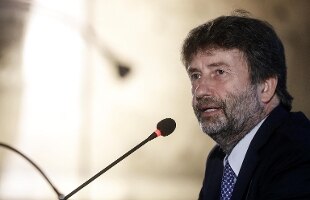Share
October 31st 2019What is the state of health of the culture sector in Italy? This question is answered by the Federculture Annual Report which, in the fifteenth edition - presented this morning in the Spadolini Room of the MiBACT in the presence of Minister Dario Franceschini -, in addition to the usual framework for updating and analyzing last year's themes and trends, explores in depth statistical focus the trend of the main indicators in the last ten years, 2008-2018, those that have seen the beginning and the intensification of the international economic crisis from which our country came out only in recent years.But how much did the economic crisis affect culture, household consumption in this area and those who produce and invest in culture? And the cultural sector that has suffered particularly from the crisis, nor has it come out and has really reversed the trend towards more stable and lasting growth?
The data collected in the Report and aggregated in three significant years - 2008, the year of the start of the serious international economic crisis, 2013 (new Italian economic crisis) and 2018 - reveal a sector that has been able to recover much of the lost ground but not in all areas has overcome structural problems, accentuated by the crisis. There are three groups of indicators analyzed: state and local public spending; consumption and cultural participation and tourism.
Spending in the culture of the State , Municipalities, Provinces and Regions in 2008 was about 6 billion and 550 million euros, which became 5 billion and 849 million in 2017 (year of comparison for availability of data). Not only has the share of expenditure for 2008 not been fully recovered (there are still around 700 million euros left) but it has also changed profoundly: the State has gone from 2,116 million to 2,428 million (after falling below two billion), the Municipalities went from 2,462 million to 1,896 million (constantly decreasing), the Provinces have almost disappeared from 295 to 52 million, the Regions, which also had a negative peak in 2013, are struggling to recover the 2008 share. In terms of resources public, therefore, still needs to do a lot to restore positions to Italy, even in the European comparison (we are fourth in Europe (0.8%) in relation to GDP and third best (1.7%) in relation to total public expenditure) .
In terms of cultural consumption , compared with the trend in GDP and general household spending, the data show that household spending on culture initially suffered the most from the general economic crisis: from 2008 to 2013 it fell by 4.6% while overall consumption remained at + 1% and GDP fell by 1.6% in the same years. Since 2013, however, household spending on culture has grown more + 13.4% compared to an increase in total expenditure of 8.8% and GDP of 9.9%. But this growth is unequal, not only between areas of the country as is easy to imagine, but also among the sectors of cultural production.
This is the picture highlighted by the data on the cultural participation of Italians, which in the first five years after the crisis (2008/2013) saw a contraction in all areas: theater -8.9%, cinema -4.4%, museums -7.5%, concerts -8.8%. In the following five years the trend in the sectors differs: Italians who attend museums grew by 23% (3.4 million more) and those who visit archaeological sites by 33% (3.9 million more), while those who go to the theater or the cinema have increased by around 4%.
The decade (2008/2018) closes, therefore, with very different balances: the theater has not fully recovered and indeed has lost almost 600 thousand users (-4.8%); cinema is in substantial balance with about 28 million users, -0.4% in ten years, "light" music concerts are good with + 2.8%. But the real exploit is that of the museums that in the decade saw their users grow by 14% and the archaeological sites and monuments where 31% of Italians went to more (data also confirmed in the southern regions of the country).
The data on museum use are also strengthened by those on visitors to state museums that pass from 33 to 55 million in ten years, + 67%, growing especially from 2013 to 2018, with a performance of 38 to 55 million visitors, +44 %. The excellent results of state museums appear to be driven by museums with special autonomy which, in the last year alone, 2018/2017, see their visitors increase by almost 15%, with peaks much higher in some regions such as Campania (+36 %) and Tuscany (+ 46%).
Data which, even considering that the major cultural attractors of the country are part of the category of autonomous museums, confirm a direct correlation between the greater managerial autonomy of the museum institutes and a more marked propensity to the public and its involvement, to the advantage of the enhancement and use overall value of the assets.
The trend of the reading that reveals dramatic data is of a different sign: from 2008 to 2018 we have a decrease of those who read a book a year by 5.5% (1.3 million less readers on an already small number of Italians who read, about 23 million in 2018); those who read one to three books per year decreased by 7.9% (-18.9% in the South), while strong readers grew by 2.8% (with + 8.4% in the North West and -15 , 6% in the Islands).
Tourism figures see growth in international tourism from 2008 to 2018 (+ 52.2% world, + 46.1% Europe) while Italy grows less (+ 34% in the decade, of which + 23.3% from 2013 to 2018). The composition of this growth must make us reflect: there is an increase in international arrivals of 51.2%, while domestic arrivals grow by 20.8%, with a weakness in the domestic market.

